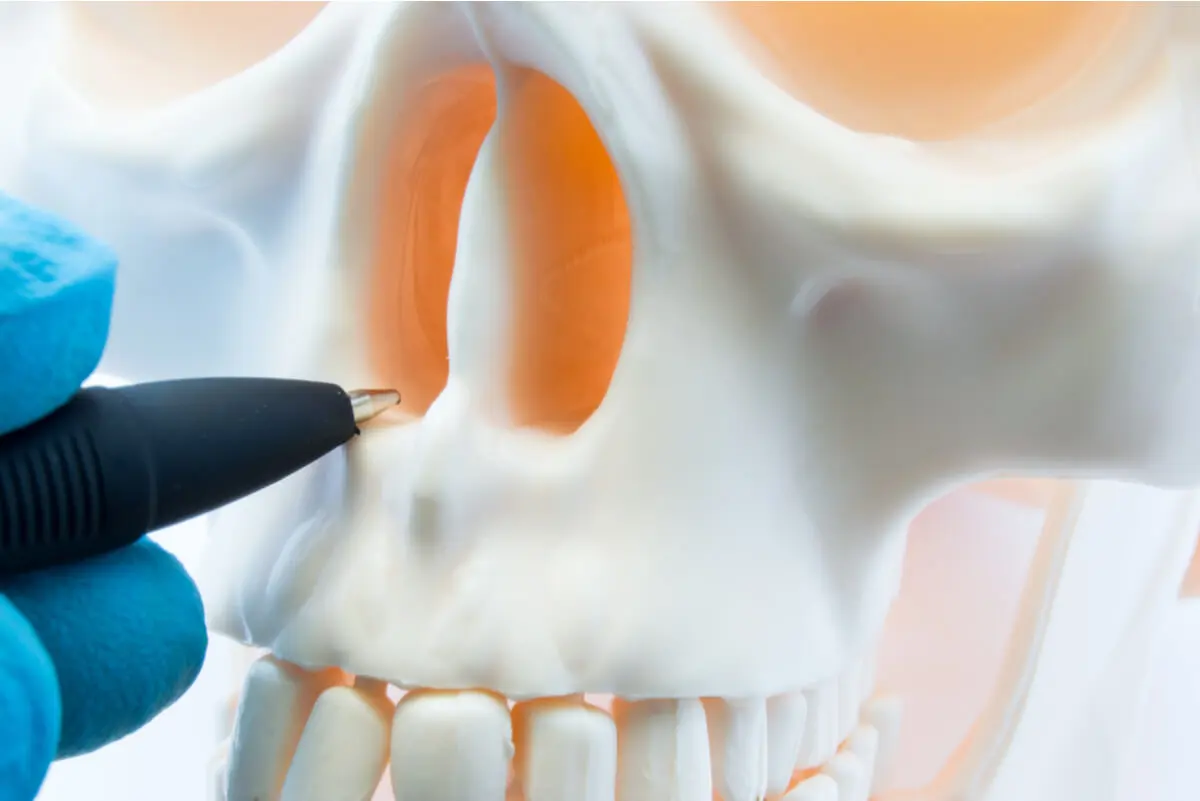Meth Mouth: The Detrimental Effects of Methamphetamine on Dental Health

The expression “meth mouth” refers to a pathological condition in the oral cavity that has been associated with methamphetamine use. It’s not a single disease, but a set of problems that appear when a person is addicted to this drug.
Although there are reports of a decline in methamphetamine use, it’s not a situation that has been overcome. In the United States, for example, up to 1% of those over 12 years of age have taken the drug in the last year. And in the same country, 0.6 % are known to have problematic use or addiction itself.
The ease with which the drug is obtained and the synthesis of its designer form, called “crystal meth, have made it popular. Although this drug been with humans for more than 100 years, the crystal meth presentation had its heyday in the 1990s.
This is also the decade that finds the first reports of cases with “meth mouth.” Concern was heightened when it was discovered that the clinical picture was commonly associated with children and adolescents.
Methamphetamine
The correct chemical name of this drug is methylamphetamine, and it was born as a medical product. In 1893 the molecule had already been synthesized, and in the early 1920s, it had a registered patent as a product.
In fact, it was first sold for paramedical use freely in Europe, especially in Germany.
The crystalline design form was marketed illegally in California, and from there, it reached the whole world. It’s used for smoking to obtain stimulant effects on the central nervous system. It’s also commonly combined with cocaine by many users.
Methamphetamine acts on neurons in the central nervous system, increasing dopamine and norepinephrine concentrations. At the same time, it reduces the neurons’ reuptake of these substances, so their presence is further increased.
That’s why the direct effect of the drug is stimulation. The brain is able to work more efficiently and with less exhaustion, at least for a few moments. People who use report that they have more potency, are more alert, have less fear, and feel greater sexual desire.
This remains during the so-called “high.” There’s a euphoria that’s pleasurable and even acts as an analgesic, blocking pain sensations.
It’s understandable, then, that methamphetamine addiction is so powerful and that it’s difficult to initiate a process of withdrawal. However, tolerance to the drug is rapid, so more and more of the drug is required to get the same “high.”
We think you may be interested in reading this, too: 9 Natural and Effective Tips for Taking Care of Your Teeth
The effects of methamphetamine on the body
The health effects exceed the “meth mouth,” which we will discuss in more detail later. Users often go from the initial excitement to the “comedown,” with tremors, insomnia, and lack of appetite that can last for quite some time.
When use becomes chronic and addiction occurs, the person’s behavior changes. More violence, paranoid states, and hallucinations are then often registered.
An overdose can also occur when the person consumes an excessive amount in a single moment. The severity of these symptoms is notorious and life-threatening. Patients have palpitations, vomiting and convulsions. If not treated in time, it leads to ventricular fibrillation and even acute myocardial infarction.
On the other hand, methamphetamine withdrawal syndrome has the following symptoms:
- Depression or anxiety
- Extreme fatigue
- Uncontrollable desire to consume more meth
Pregnant women with methamphetamine addiction have recorded an increased incidence of premature births and miscarriages. Also, the drug is capable of causing malformations in the fetus along with developmental delay.

What is meth mouth?
Specifically, it’s believed that prolonged methamphetamine use is capable of causing a conjunction of problems in the oral cavity, including the following:
- Xerostomia or dry mouth
- Extensive and deep cavities
- Bruxism or teeth grinding
- Trismus or contracture of the masseter muscles
Cavities are characteristic in these patients. The teeth take a strong blackish color, and there’s an aggressive crumbling that causes the loss of almost the totality of the dental piece. This makes it possible to see directly into the exposed jawbone.
Scientific studies that compared drug-using populations with those who did not use the drug found notable differences. In addicts, there’s also a higher prevalence of cavities. In addition, there are higher amounts of bacterial plaque and more dental calculus.
When the effect of methamphetamine in the mouth was compared to the same effect that other drugs (such as heroin) could cause, it was found that meth mouth appears more quickly. In other words, patients addicted to crystal meth suffer the negative effects on their teeth earlier and more severely.
Like this article? You may also like to read: Seven Home Remedies for Removing Plaque From Your Teeth
Why does meth mouth happen?
As you can see, meth mouth is a combination of pathological situations. It’s not only cavities, but also dry mouth and bruxism.
Therefore, the most accepted theory is that addiction causes physical and also behavioral changes, which leads to many risk factors coming together in the same person. Addicted patients also tend to brush much less, drink more soft drinks and not enough water, as well as eat poorly nutritiously.
Crystal methamphetamine is acidic. When combined with the sugar in soft drinks in the context of poor oral hygiene, it’s a breeding ground for cavities.
Regarding saliva, some researchers found that the drug alters its acidity. Therefore, with a higher presence of sugar for bacteria, the risk of caries increases markedly. The concomitant effect of other substances that often accompany methamphetamine use cannot be ruled out either. Here it’s also worth mentioning cocaine, but also alcohol. In any case, the lack of proper oral hygiene is always at the root.
In addition, it’s not uncommon for people with designer drug addictions to report intense, constant thirst with a persistent sensation of dry mouth. Therefore, meth mouth xerostomia would be a further symptom of addiction.
Finally, teeth grinding does appear to be a direct effect of the drug and its route of administration. One scientific study found that addicted people who smoked methamphetamine had more bruxism than those who injected it intravenously.
Persistent grinding disrupts the temporomandibular joint (TMJ) and wears down the enamel. This is the outermost layer of the tooth. When it corrodes due to excessive clenching, there is tooth sensitivity, and an essential protective barrier for the health of the dental elements is lost.
The meth mouth and necrosis of the jaws
Some clinical case reports that have occurred in recent years have mentioned the situation of patients with osteonecrosis. That is, death of the bone tissue of their jaws occur after prolonged and sustained consumption of methamphetamine.
This is one more element of the picture known as “meth mouth,” although not all scientists agree. For some, it’s considered a manifestation of another disease called “drug-related osteonecrosis of the jaws.”
Drug-related osteonecrosis of the jaw occurs when a person suffers the death of facial bone cells due to taking certain drugs. The most commonly associated are bisphosphonates, which are prescribed for severe osteoporosis.
There’s speculation that methamphetamine has similar consequences. That is, it may have the potential to accelerate bone wasting while at the same time may stop the healing capacity of osteoblasts, which are the cells in charge of producing new bone tissue.
The result is necrosis of the jaws because more tissue is lost than new tissue is generated. Thus, when a methamphetamine-addicted person has a tooth extracted, there’s a risk that the wound will expose some of the bone underneath with the possibility of infection.
There’s also been speculation that people with osteonecrosis of the jaws are victims of a low-quality drug that they obtain at a lower price. Precisely, the risk appears to be greatest when high phosphorus methamphetamine is used.
Phosphorus in excess produces a similar picture, called “fossil jaw.” In this condition, there’s weak bone tissue, necrosis, bacterial infections on the jaw wounds, and fistulas draining pus into the oral cavity. This condition had already been described as a form of intoxication in matchbox factory employees in the 19th century.

The treatment of meth mouth
One of the biggest problems in treating meth mouth is that people often don’t admit to using the substance. Therefore, it’s not uncommon for a dentist to find the signs of the syndrome without being able to confirm that the origin is the drug.
If there’s a suspicion that the patient is a methamphetamine user, then the practitioner has to take some precautions. In the first instance, biosafety is key. It’s likely that the intravenous addict also has blood-borne diseases, such as hepatitis C.
Also, an approach to treat cavities should not be initiated, for example, if the patient comes to the office with obvious signs of intoxication. This may occur, for instance, if the patient is hallucinating or in a paranoid state.
In addition, anesthetic placement may interact with methamphetamine. Because of the increased noradrenaline in the patient, dental medications have the potential to increase the risk of myocardial infarction or arrhythmia.
As a general rule, a methamphetamine-addicted patient attending a dental office shouldn’t receive local anesthesia with noradrenaline. Nor should they receive general anesthesia, which changes their respiratory rate – something that’s already been altered by the drug.
Beyond the above-mentioned precautions, the treatments to be implemented have to follow the usual steps to solve caries, bruxism, and xerostomia. However, the special situation of osteonecrosis does merit a particular approach.
This disease is almost always treated surgically. An attempt to remove dead tissue and remove it from the bodyis made. A 100% success rate is never assured, but most patients are able to stop the deterioration of their jaw bones. Of course, this is only if, along with the surgery, they also stop using methamphetamine.
Meth mouth prevention
People with meth mouth are addicted to a drug that alters their daily behavior. In terms of oral health, they often have poor hygiene, and the condition of their teeth and gums worsens over time.
Prevention of meth mouth is coupled with prevention of all the negative effects methamphetamine has on the body. Therefore, the best approach is to prevent a person from becoming addicted to begin with or, in any case, to recover and rehabilitate someone who is already addicted.
In the meantime, the care of a person with addiction needs to focus on improving oral hygiene habits before they develop meth mouth. Some simple, habit-forming daily commands can help so that the patient incorporates brushing or is even able to practice rinsing.
If you have problematic use of any illegal substance, do not hesitate to consult a health professional. It’s very possible to help you curb addictive use and prevent complications in your mouth and throughout your body.
All cited sources were thoroughly reviewed by our team to ensure their quality, reliability, currency, and validity. The bibliography of this article was considered reliable and of academic or scientific accuracy.
- Howe A. M. (1995). Methamphetamine and childhood and adolescent caries. Australian dental journal, 40(5), 340. https://doi.org/10.1111/j.1834-7819.1995.tb04825.x
- Mattson, Margaret E. “Emergency department visits involving methamphetamine: 2007 to 2011.” The CBHSQ report (2014).
- Nordahl, T. E., Salo, R., & Leamon, M. (2003). Neuropsychological effects of chronic methamphetamine use on neurotransmitters and cognition: a review. The Journal of neuropsychiatry and clinical neurosciences, 15(3), 317–325. https://doi.org/10.1176/jnp.15.3.317
- Dixon, S. D., & Bejar, R. (1989). Echoencephalographic findings in neonates associated with maternal cocaine and methamphetamine use: incidence and clinical correlates. The Journal of pediatrics, 115(5 Pt 1), 770–778. https://doi.org/10.1016/s0022-3476(89)80661-4
- Brown, C., Krishnan, S., Hursh, K., Yu, M., Johnson, P., Page, K., & Shiboski, C. H. (2012). Dental disease prevalence among methamphetamine and heroin users in an urban setting: a pilot study. Journal of the American Dental Association (1939), 143(9), 992–1001. https://doi.org/10.14219/jada.archive.2012.0326
- McGrath, C., & Chan, B. (2005). Oral health sensations associated with illicit drug abuse. British dental journal, 198(3), 159–174. https://doi.org/10.1038/sj.bdj.4812050
- Ristow, O., Otto, S., Troeltzsch, M., Hohlweg-Majert, B., & Pautke, C. (2015). Treatment perspectives for medication-related osteonecrosis of the jaw (MRONJ). Journal of cranio-maxillo-facial surgery : official publication of the European Association for Cranio-Maxillo-Facial Surgery, 43(2), 290–293. https://doi.org/10.1016/j.jcms.2014.11.014
- Morio, K. A., Marshall, T. A., Qian, F., & Morgan, T. A. (2008). Comparing diet, oral hygiene and caries status of adult methamphetamine users and nonusers: a pilot study. Journal of the American Dental Association (1939), 139(2), 171–176. https://doi.org/10.14219/jada.archive.2008.0133
- Poghosyan, Y. M., Hakobyan, K. A., Poghosyan, A. Y., & Avetisyan, E. K. (2014). Surgical treatment of jaw osteonecrosis in “Krokodil” drug addicted patients. Journal of cranio-maxillo-facial surgery : official publication of the European Association for Cranio-Maxillo-Facial Surgery, 42(8), 1639–1643. https://doi.org/10.1016/j.jcms.2014.05.005
- Richards, J. R., & Brofeldt, B. T. (2000). Patterns of tooth wear associated with methamphetamine use. Journal of periodontology, 71(8), 1371–1374. https://doi.org/10.1902/jop.2000.71.8.1371
- Haskin, A., Kim, N., & Aguh, C. (2016). A new drug with a nasty bite: A case of krokodil-induced skin necrosis in an intravenous drug user. JAAD case reports, 2(2), 174–176. https://doi.org/10.1016/j.jdcr.2016.02.007
- Marx, Robert E. Bisphosphonat-induzierte Osteonekrose der Kiefer: Ätiologie, Prävention, Behandlung. Quintessenz Verlag, 2013.
- Rommel, N., Rohleder, N. H., Wagenpfeil, S., Härtel-Petri, R., Jacob, F., Wolff, K. D., & Kesting, M. R. (2016). The impact of the new scene drug “crystal meth” on oral health: a case-control study. Clinical oral investigations, 20(3), 469–475. https://doi.org/10.1007/s00784-015-1527-z
This text is provided for informational purposes only and does not replace consultation with a professional. If in doubt, consult your specialist.








